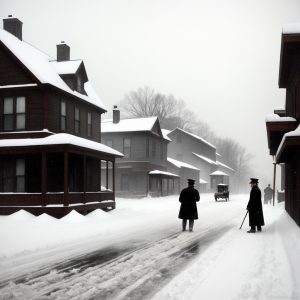The Great Blizzard of 1888, which struck the northeastern United States in March of that year, remains one of the most powerful and devastating snowstorms in American history. Lasting from March 11 to March 14, the blizzard unleashed massive snowfall, reaching up to 50 inches in some areas, and was accompanied by fierce winds that created snowdrifts as high as 30 feet. It affected an area stretching from the Great Lakes to the East Coast, including major cities like New York, Boston, and Philadelphia. The storm paralyzed transportation systems, disrupted telecommunication lines, and caused widespread power outages. Thousands of people were trapped in their homes, and the loss of life from the storm and its aftermath was tragic, with at least 400 fatalities recorded.
The impact of the Great Blizzard was felt immediately, but its long-term effects were equally significant. The storm exposed the vulnerabilities of urban infrastructure and led to major improvements in snow removal and emergency response systems in cities across the Northeast. The severity of the blizzard also prompted advancements in weather forecasting and the establishment of better communication networks, including the expansion of telegraph lines. In the years following the storm, the event became a powerful symbol of nature’s might and the need for better preparedness in the face of extreme weather.
The Great Blizzard of 1888 serves as a reminder of the unpredictability of nature and the resilience of communities in the face of disaster. It also marks a pivotal moment in the history of meteorology and urban development in the United States, showcasing how even the most powerful storms can lead to progress and innovation. Today, the legacy of the blizzard is remembered not just for its devastation but for the lessons it taught about adapting to the forces of nature and the importance of preparedness.

